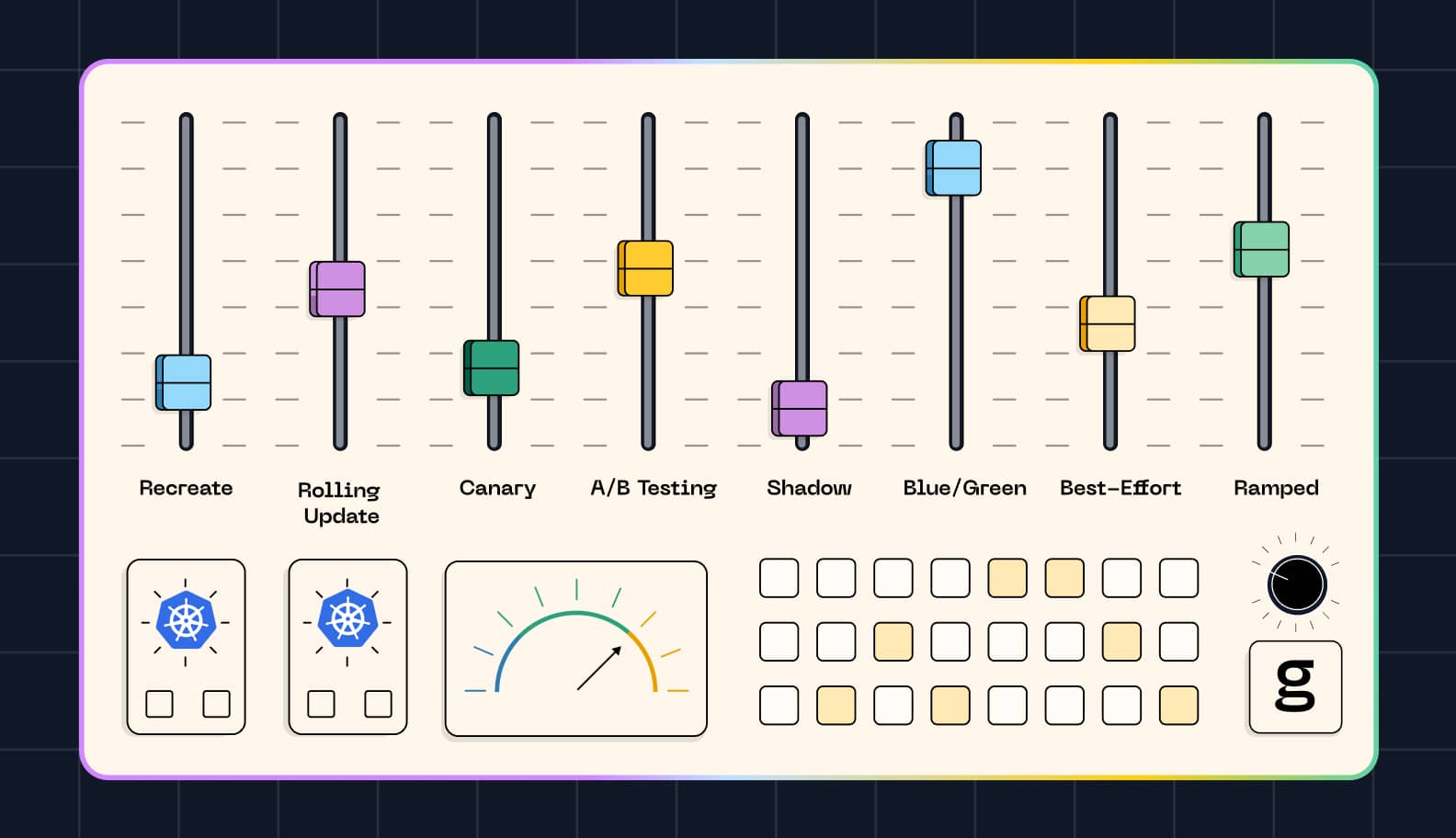

Allow us to explain the relationship between Kubernetes and Rancher using some metaphors.
If Kubernetes were a car, Rancher would be a car trailer. If Kubernetes were a layer of cake, Rancher would be a fully frosted, multi-layered dessert. If Kubernetes were a player in an orchestra, Rancher would be the conductor, keeping track of all of the musicians and helping them work together effectively.
What we're getting at here is that Rancher is a solution that builds upon and extends Kubernetes. You can run Kubernetes without Rancher, but Rancher adds extra functionality that helps to manage, scale, and secure Kubernetes-based environments.
That, at least, is a high-level explanation of Rancher vs. Kubernetes. Keep reading for the detailed version as we explain everything you need to know about the similarities and differences between Rancher and Kubernetes, and how to use them together.
What is Kubernetes?
Kubernetes, of course, is an open source container orchestration platform. Its main job is to take sets of containers (known in Kubernetes-speak as Pods) and deploy them across a set of servers (or nodes).
Although Kubernetes isn't the only container orchestration platform available (alternatives include options like Docker Swarm and HashiCorp Nomad), it has eclipsed competing orchestrators over the past several years to become, by far, the most widely used orchestration solution for containerized applications.
Kubernetes key features
The main features of Kubernetes include:
- Cloud-agnosticism: Kubernetes can deploy containers across any cloud platform – or, for that matter, any on-prem infrastructure.
- Easy application scaling: Kubernetes makes it easy to scale applications up and down by adding new instances or changing the resources allocated to Pods.
- Resource usage optimization: By spreading Pods across sets of nodes, Kubernetes helps ensure that applications consume the resources of a cluster in an efficient way. Setting resource quotas and limits can help to optimize resource consumption even more.
- Self-healing: If a Pod fails, Kubernetes automatically tries to restart it. This means Kubernetes can automatically "heal" many failures.
- Environmental consistency: Kubernetes works in the same way regardless of the underlying infrastructure. Thus, you can run on any cloud or on-prem environment, or provision nodes using any operating system (with the limitation that the control plane node must run on some version of Linux), without having to change your workloads or tooling.
What is Rancher?
Rancher is a platform designed to streamline the management of containerized application environments. Rancher does this by providing a variety of features, such as managing multiple Kubernetes clusters through a centralized platform and a custom dashboard. Rancher can also manage application environments created using other popular orchestrators, including Docker Swarm and Mesos.
Note, too, that Rancher is also the name of a company (which was acquired by SUSE in 2020) that develops the platform we just described. Rancher also builds other open source solutions that complement its Kubernetes management platform, such as the RK2E Kubernetes distribution and RancherOS, a lightweight Linux distribution designed for hosting containerized applications. (RancherOS is no longer under active development but we mention it here because who doesn't love a Linux distribution whose name is partly eponymous with a Mexican breakfast dish?)
So, while the term Rancher typically refers to a software platform, it can also refer to a company – just like Docker can mean both Docker the company and Docker's collection of container management tools. It's confusing, we know, but that's why we wrote this article – to help you piece together exactly what Rancher means and what it has to do with Kubernetes.
Rancher key features
The main features of Rancher include:
- Cluster provisioning and import: Using Rancher, you can deploy a new cluster using Kubernetes or other popular orchestrators. You can also import existing Kubernetes clusters to manage them within Rancher.
- Projects: Projects are a Rancher feature that makes it possible to combine multiple Kubernetes namespaces into a single object. This is useful in multi-tenant clusters where a single group of users needs to share resources across multiple namespaces – a use case that Kubernetes itself wasn't designed to support, making this a notable Kubernetes vs. Rancher distinction.
- Extended RBAC control: Rancher extends Kubernets's native Role-Based Access Control (RBAC) framework in ways that make it easier to manage permissions for users and groups across multiple Kubernetes clusters.
- Monitoring and alerting: Rancher provides a monitoring and alerting application that makes it easy to set up monitoring and alerts based on a variety of external tools.
- Application catalog: The Rancher application catalog provides a variety of preconfigured solutions that you can easily deploy on a Rancher environment.
- Dashboard: Rancher provides a graphical dashboard for monitoring and managing clusters. This is distinct from the Kubernetes Dashboard, whose purpose is to help monitor and manage Kubernetes itself.
Kubernetes vs. Rancher: Key differences
To put it concisely, the meaning of Kubernetes vs. Rancher boils down to the fact that each of these solutions are fundamentally different types of things. Kubernetes is a container management and orchestration platform, while Rancher is a platform that helps manage Kubernetes. Thus, trying to make an apples-to-apples comparison between the two solutions doesn't make a whole lot of sense.
That said, there are a variety of important distinctions between Kubernetes and Rancher. Here's a summary of the main differences.
Architecture
Because Kubernetes and Rancher do different things, they have different architectures.
The Kubernetes architecture involves a set of control plane components (like an API server, a workload scheduler, and an Etcd data store), which manage sets of Pods deployed across worker nodes.

The Rancher architecture is a bit similar in that Rancher also has a central control plane (although it's not usually called that) that serves as a central management hub for various Kubernetes clusters.

Thus, while Kubernetes and Rancher both use architectures designed to manage distributed collections of resources, the components within each architecture are different.
Functionality and scope
Another differentiator in Rancher vs. Kubernetes is the core functionality and scope of each platform.
As we mentioned above, the main job of Kubernetes is to manage containerized applications deployed across a cluster of servers. In contrast, Rancher's primary focus is on helping to manage one or more Kubernetes clusters.
This means that if the only thing you want to do is deploy a few containerized applications within a single Kubernetes cluster, Rancher may not add much value for you. But when you have to manage multiple Kubernetes clusters – which you may if you're a large-ish business that needs to deploy containerized apps across multiple clouds, data centers, or other infrastructures – Rancher helps you do that.
Kubernetes cluster management
An important distinction in Kubernetes vs. Rancher is that modern Kubernetes is really only designed to manage a single cluster. Historically, there were some attempts – most notably the Kubernetes Cluster Federation project – at building native functionality for Kubernetes that would make it easy to manage multiple clusters using a single control plane or a federated cluster architecture. But those projects are now mostly abandoned, and Kubernetes itself no longer makes multiple Kubernetes cluster management a priority.
Instead, platforms like Rancher have filled that void. The ability to manage multiple Kubernetes clusters is a key Rancher capability.
Distributions
There are many "distributions" of Kubernetes – meaning prebuilt platforms designed to make it easy to set up and manage Kubernetes. In contrast, there is just one Rancher.
This might seem slightly confusing because, as we noted above, Rancher also develops a Kubernetes distribution, called RKE2. But that is separate from Rancher's multi-cluster management platform – and you don't have to use Rancher's Kubernetes distribution to use Rancher. Rancher can manage clusters created using virtually any Kubernetes distribution, not just RKE2.
Extensibility and integration
Kubernetes and Rancher are both open source platforms, and both benefit from dynamic communities that offer a variety of extensions and integrations.
That said, Kubernetes has more extensions and integrations than Rancher. That's probably because Kubernetes is simply a larger project at the end of the day: Almost everyone who deploys containerized applications today uses Kubernetes, but only a subset of Kubernetes clusters are managed using Rancher.
Rancher does integrate nicely with a variety of other tools and platforms – such as Harvester, an open source hyper-converged infrastructure solution, and Longhorn, a block storage platform. (Not coincidentally, Harvester and Longhorn are both part of the Rancher/SUSE ecosystem.) But the list of Kubernetes integrations is much longer – so long, in fact, that we won't attempt to describe it in detail here, but suffice it to say that virtually every tool available today that handles some aspect of container management can integrate with Kubernetes in one way or another.
Support options
Since Kubernetes is not a company, there is no paid support available from Kubernetes itself (although various Kubernetes vendors offer support options focused on their Kubernetes platforms).
Rancher, in contrast, is a company with paid support options available. You can also get community support in places like the Rancher Forums, but you're not limited to community support if you use Rancher.
Rancher vs. Kubernetes: Key Similarities
If you've read this far, you know that Rancher and Kubernetes are distinct in most ways. But that doesn't mean they're totally different. On the contrary, there are several high-level similarities between the two platforms, including:
- Both can be used to deploy containerized applications. You can deploy containerized apps directly on Kubernetes, and you can use Rancher to set up Kubernetes clusters on top of which you then deploy containerized apps. So, while the process is a bit different, you get basically the same result.
- Both are open source solutions. Rancher is also a company, as we noted, but it makes money mostly by selling support services, not by selling a product.
- Both have modular architectures. As we discussed above, the architectures are different because they serve different purposes, but in both cases, they are designed to help manage distributed resources using a flexible, modular approach.
- Both benefit from dynamic communities that provide a variety of extensions and integrations – although, again, Kubernetes has more of these things simply because it's a larger project.
Rancher and Kubernetes: How do they complement each other?
The fact that Rancher and Kubernetes are similar in some ways but different in others is why people sometimes conflate them with each other. The best way to tame this confusion is to think of Rancher as a platform that complements Kubernetes, rather than as an alternative to Kubernetes. Put another way, Rancher helps you reap even more Kubernetes benefits by helping to manage complex Kubernetes deployments.
Rancher complements Kubernetes in the following ways:
- Adding multiple Kubernetes cluster management features that are not available in Kubernetes itself.
- Allowing teams to manage Kubernetes clusters alongside clusters created using other orchestrators, like Docker Swarm.
- Making it easier to manage user and group permissions across multi-tenant or kubernetes damulti-cluster environments.
- Simplifying the management of Kubernetes monitoring and alerting across a multi-cluster environment.
- Providing a graphical user interface for monitoring and managing clusters.
Alternatives to Rancher for Kubernetes
Although Rancher is unique in some respects, it's not the only type of solution that simplifies the management of multiple Kubernetes clusters.
As an alternative to Rancher, you could use a Kubernetes distribution that provides multi-cluster control capabilities. For instance, multi-cluster setups on Amazon EKS are possible to implement (although this is not a common use case for EKS and it requires special expertise). Likewise, OpenShift has some multi-cluster management capabilities that are available as advanced add-on features.
Another type of Rancher alternative are platforms that, like Rancher, are not Kubernetes distributions themselves, but aim to simplify multi-cluster setups. Examples include Portainer and Verrazzano, to name just a couple. These solutions aren't direct alternatives to Rancher because their functionality only partly overlaps with that of Rancher. But they can address the same types of multi-cluster use cases in some situations.
Kubernetes and Rancher management with groundcover
Whether you choose to run Kubernetes with help from Rancher or not, groundcover has you covered when it comes to observability. By collecting and correlating all relevant logs, metrics, and traces from all layers and corners of your Kubernetes stack, groundcover helps you identify and remediate performance issues so you can manage Kubernetes troubleshooting quickly and efficiently.

Note, too, that groundcover works just as well with multiple Kubernetes clusters as it does in single-cluster mode, whether or not you use Rancher.
Living large with Kubernetes and Rancher
We said it before and we’ll say it again: You definitely don't need to use Rancher if you use Kubernetes. But in some cases – specifically, those that involve multiple Kubernetes clusters or complex multi-tenancy requirements – Rancher makes it much easier to work with Kubernetes at scale. If you want to manage complex Kubernetes environments in a simpler way, consider adding Rancher to your stack.
Sign up for Updates
Keep up with all things cloud-native observability.
We care about data. Check out our privacy policy.







